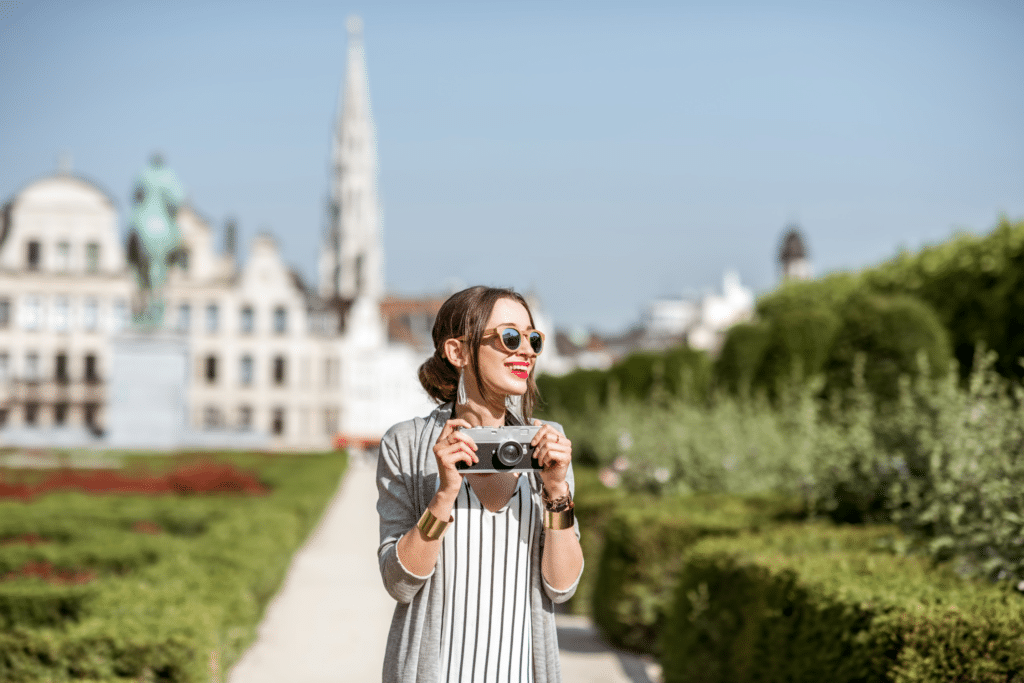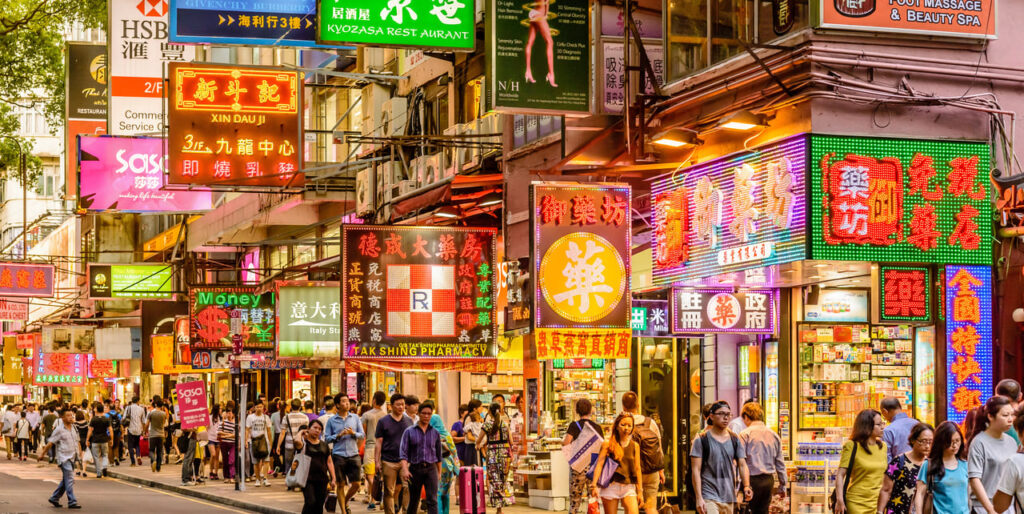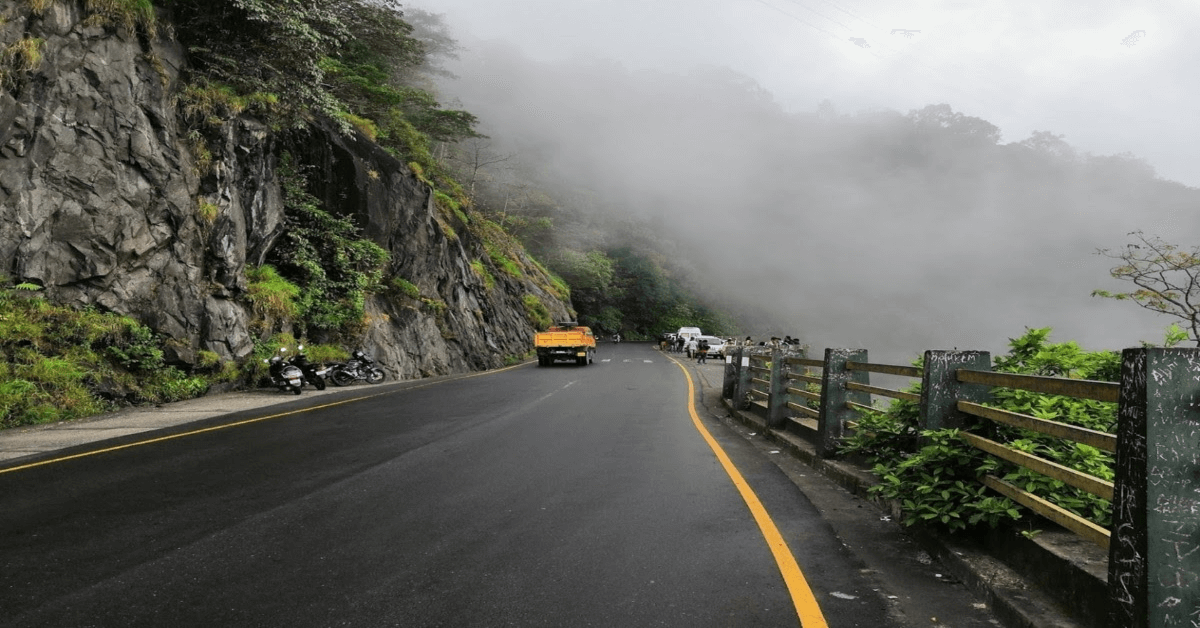
How Can You Navigate Hong Kong Like a Local?
Hong Kong, often referred to as the “Pearl of the Orient,” is a vibrant, bustling metropolis that seamlessly blends East and West. From the glitzy skyscrapers of Central to the serene temples nestled in the hills, there’s no shortage of things to see and do. However, with its fast-paced lifestyle, packed public transportation systems, and a mix of cultural influences, navigating Hong Kong as a tourist can be overwhelming.
So, how can you navigate Hong Kong like a local? The key is to embrace the city’s rhythms, understand its transportation systems, and follow local etiquette and practices. With a bit of preparation, you can enjoy the city like a seasoned resident.
Table of Contents
ToggleKey Takeaways:
- Public transport is your best friend: Use the MTR, buses, and ferries to get around the city quickly and efficiently.
- Walking is essential: Hong Kong is highly walkable, so prepare for plenty of exploration on foot.
- Learn the local dining culture: Embrace dim sum, street food, and cha chaan teng for a true Hong Kong experience.
- Respect the local customs: Follow basic etiquette, such as queuing and maintaining personal space, to blend in seamlessly.
Master the Public Transport System

Hong Kong’s public transportation is world-class and incredibly efficient. As a local, you will rarely find yourself driving or relying on taxis. Instead, you’ll use the MTR (Mass Transit Railway), buses, ferries, and trams. Here’s a quick guide to navigating each of them:
MTR (Mass Transit Railway)
The MTR is the backbone of Hong Kong’s public transport network, offering quick access to major districts across the city. The system is clean, punctual, and operates from early morning until around midnight.
- How to use it like a local:
- Purchase an Octopus Card—a rechargeable smart card used for payment on the MTR, buses, trams, ferries, and even in convenience stores.
- Always check the station maps for the right line and direction. The stations are well-signposted in both English and Cantonese.
- Rush hour can be busy, but locals are efficient at getting in and out, so follow their lead.
Buses
Hong Kong’s bus network is extensive and connects more remote areas not covered by the MTR.
- How to use it like a local:
- You can also use the Octopus Card to pay for bus rides.
- Look at the bus route numbers to know which one to take. The routes are typically color-coded and easy to understand.
- Buses tend to be crowded, especially during peak hours, but don’t hesitate to ask the driver for directions.
Trams
The iconic double-decker trams, or “Ding Dings,” run along the northern part of Hong Kong Island. They’re slow but offer a unique view of the city.
- How to use it like a local:
- Board at the front and exit at the back.
- Pay with your Octopus Card or cash (though cash is less common).
- Trams are an excellent way to see the city, but they’re not the fastest option.
Ferries
For a true local experience, take a ferry ride across Victoria Harbour. Ferries are popular among locals who travel between Hong Kong Island and Kowloon.
- How to use it like a local:
- Hop on the Star Ferry from Central to Tsim Sha Tsui for a beautiful view of the skyline.
- Be mindful of the departure times, especially during rush hours, as the ferries can get quite crowded.
Embrace the Walkability of Hong Kong
Hong Kong is one of the most walkable cities in the world. Locals are used to walking from place to place, whether it’s between metro stations, to restaurants, or through shopping districts.
How to walk like a local:
- Use pedestrian bridges: Many busy intersections in Hong Kong are connected by elevated walkways, which make it safer and easier to navigate busy streets.
- Respect pedestrian lanes: Locals are known for their quick-paced walking, so try to keep up with the flow of foot traffic. It’s also important to always use pedestrian crossings.
- Avoid jaywalking: While it may seem tempting to cross the street at any point, Hong Kong locals generally avoid jaywalking. It’s not just safer; it’s also the law.
Know Your Neighborhoods
Each neighborhood in Hong Kong has its own unique character. By learning about these districts, you’ll be able to navigate the city like a local and get a feel for the local culture.
Central and Sheung Wan
- The financial hub of Hong Kong, full of skyscrapers and high-end shopping malls.
- Known for its trendy bars, restaurants, and antique shops in Sheung Wan.
Mong Kok and Yau Ma Tei
- One of the busiest parts of Kowloon, with vibrant markets, street food, and shops.
- A great place to shop for electronics, fashion, and souvenirs.
Causeway Bay
- A shopping paradise for locals, full of fashion stores, malls, and local eateries.
- Perfect for those looking for trendy clothing and bustling nightlife.
Tsim Sha Tsui
- A popular area for tourists with shopping, dining, and cultural landmarks.
- Offers amazing views of Victoria Harbour, especially from the Tsim Sha Tsui Promenade.
Explore the Food Scene Like a Local
Food is an essential part of life in Hong Kong. Street food vendors, local cafés, and hole-in-the-wall restaurants are the heart of the culinary scene. Here’s how to eat like a local:
Dim Sum
Dim sum is a must-try experience in Hong Kong, and there’s no shortage of dim sum restaurants, especially in areas like Central, Mong Kok, and Tsim Sha Tsui.
- How to eat like a local:
- Arrive early to beat the crowds. Locals typically enjoy dim sum for breakfast or lunch.
- Order a variety of small dishes, such as dumplings, buns, and spring rolls.
- Don’t forget the tea, as tea drinking is an integral part of the dim sum experience.
Street Food
For a true local experience, try some of the street food. You’ll find everything from egg waffles to skewered meats, fish balls, and curry fish balls.
- How to eat like a local:
- Look for street vendors in busy areas like Mong Kok or Causeway Bay.
- Be adventurous and try unique items like stinky tofu or pineapple buns.
Cha Chaan Teng (Hong Kong-style cafés)
These casual, local cafés are found all over Hong Kong and serve a blend of Cantonese and Western dishes.
- How to eat like a local:
- Don’t be afraid to try Hong Kong-style milk tea or a classic Hong Kong breakfast set, which might include macaroni soup, fried eggs, and toast.
Respect Local Etiquette and Customs

Hong Kong has a unique mix of Chinese and Western cultural influences, and it’s important to respect local customs and etiquette while navigating the city.
How to behave like a local:
- Be mindful of your space: Hong Kong can get crowded, especially during rush hour, so always be aware of your surroundings.
- Queuing is important: Locals are very disciplined about lining up. Whether it’s for the MTR, buses, or food, always wait your turn.
- Keep your voice down: Hong Kong is a bustling city, but locals tend to speak softly in public places.
- Tipping is not mandatory: While tipping is appreciated, it is not customary in Hong Kong. In most cases, service charges are already included.
Use Apps and Technology Like a Local
Hong Kong is a highly digitalized city where technology plays an essential role in everyday life. From navigating the MTR to finding the best places to eat, locals rely on various apps to make their lives easier. Here’s how you can use technology like a local:
MTR Mobile App
This app provides real-time information on train schedules, station maps, and the quickest routes. It’s incredibly helpful in finding the most efficient way to get around the city, especially when you’re pressed for time.
- How to use it like a local: Download the MTR Mobile app before your trip and familiarize yourself with the station layouts, ticketing, and route options. The app also shows whether trains are running on time or experiencing delays, which is a crucial time-saver.
Google Maps and Citymapper
Although the MTR system is easy to use, there are plenty of other public transportation options, including buses and trams, and navigating between different transport networks can get confusing. Google Maps and Citymapper are reliable apps for this purpose.
- How to use it like a local: If you’re trying to navigate the city via buses or ferries, use these apps to check schedules and suggested routes. Many locals use Citymapper to plan journeys, as it provides up-to-date details on the fastest modes of transport.
HKTaxi and Uber
If you’re not in the mood for public transport, taxis or ride-sharing services like Uber are excellent alternatives. HKTaxi allows you to easily hail a taxi from your phone, even if you don’t speak Cantonese, making it a favorite among locals and visitors alike.
- How to use it like a local: HKTaxi is available in English and is easy to use, but make sure to have your destination written down or in your phone. While Uber operates in some areas, taxis are still the go-to choice for many locals, as they are widely available and relatively affordable.
Food Delivery Apps
Hong Kong has a robust food delivery culture, with locals often using apps like Foodpanda and Deliveroo to order food to their homes or offices. This is especially popular during the workday or late at night when local restaurants might close early.
- How to use it like a local: Order from local eateries for quick delivery to your location. Be mindful that peak times like lunch hours can see longer delivery windows, so ordering ahead can save you time.
Explore Off-the-Beaten-Path Locations
While the main tourist attractions in Hong Kong (Victoria Peak, the Avenue of Stars, Disneyland) are definitely worth visiting, the city is full of hidden gems that will give you a more authentic experience, just like the locals.
Hidden Hong Kong Islands
Aside from Hong Kong Island and Kowloon, Hong Kong is home to several smaller islands that offer tranquil escapes from the bustling city. Some of these islands are popular among locals for weekend getaways or day trips.
- Lamma Island: Known for its laid-back atmosphere, Lamma Island is famous for hiking trails, seafood restaurants, and its car-free environment. Locals love to escape the hectic city life here.
- Cheung Chau Island: A charming island with a slower pace, Cheung Chau features sandy beaches, fishing villages, and scenic walking trails. You can try the famous “Cheung Chau bun” here—a treat locals adore.
Local Markets and Streets
Hong Kong has several markets that are hidden gems, frequented mostly by locals. These places offer a mix of food, fashion, and culture that most tourists miss.
- Tai Po Market: Located in the New Territories, this market offers fresh produce, seafood, and street food. It’s less touristy but offers a real glimpse into the lives of the people who live in the area.
- Sham Shui Po: A true local experience, Sham Shui Po is home to Hong Kong’s famous electronics market and vibrant street stalls. While tourists may flock to Causeway Bay for shopping, Sham Shui Po is where the locals go to get great deals.
Kowloon Walled City Park
For history enthusiasts, Kowloon Walled City Park is a must-see. Once the site of the most densely populated place on Earth, the area has now been transformed into a peaceful park with beautiful landscaping, ancient ruins, and a rich history.
- How to explore like a local: Take a slow stroll through the park’s serene paths and learn about the fascinating history of the area. It’s a quiet oasis that offers a different view of Hong Kong’s past.
Shop Like a Local in Hong Kong
Hong Kong is a shopping haven, but you don’t need to go to the big malls to find great deals. Local markets and street shopping are where many residents score their best finds.
Street Markets and Bargains
Street markets are an integral part of Hong Kong’s shopping culture. These markets cater mostly to locals, offering everything from inexpensive clothing to unique knick-knacks. The experience is as much about the atmosphere as it is about the shopping.
- Ladies Market (Mong Kok): Despite its name, this market offers much more than just women’s clothing. You’ll find everything from electronics and toys to souvenirs and cheap accessories.
- Temple Street Night Market: Temple Street is a must-visit for those looking to buy everything from cheap clothes to electronics, antiques, and street food. The market gets busy in the evening, making it a lively spot to experience Hong Kong nightlife.
High-End Shopping in Causeway Bay
For those with a taste for luxury shopping, Causeway Bay is the place to be. Local boutiques and international brands are located in and around this vibrant neighborhood. As a local, you’ll find that shopping here goes beyond the large malls.
- How to shop like a local: Avoid the major chains and visit smaller, independent shops selling unique pieces. Local designers often have pop-up stores in Causeway Bay, and this is where you’ll find the latest trends.
Experience Hong Kong’s Vibrant Nightlife Like a Local

Hong Kong’s nightlife is fast-paced, energetic, and diverse. Whether you enjoy quiet drinks in a speakeasy or dancing until dawn, the city has something to offer.
Hidden Bars and Speakeasies
While areas like Lan Kwai Fong and Soho are famous for nightlife, locals often prefer the hidden bars scattered around Central and Sheung Wan. These speakeasies are tucked away in alleyways or behind unmarked doors, offering an intimate and quieter environment compared to the noisy clubs of touristy districts.
- How to enjoy nightlife like a local: Look for bars in hidden spots and dive into the quieter side of Hong Kong’s drinking scene. Local favorites include The Old Man, a cocktail bar tucked behind an unassuming door, and Employees Only, known for its classy yet casual vibe.
Karaoke and Late-Night Food
Karaoke is a beloved pastime for Hong Kong residents, and you’ll find karaoke bars all over the city, particularly in Tsim Sha Tsui and Mong Kok. After a few rounds of singing, locals often head to nearby eateries for some late-night bites.
- How to enjoy like a local: Try “cha chaan teng” (local diners) for a late-night meal, or grab some street food after a long night of karaoke. Hong Kongers often indulge in a quick meal of noodle soup, congee, or dim sum after a night out.
Seasonal Tips for Navigating Hong Kong Like a Local
Hong Kong has four distinct seasons, and understanding the local habits during each can help you navigate more comfortably and authentically.
Spring (March to May)
- How locals prepare: Locals take advantage of the milder weather to enjoy outdoor activities like hiking and cycling. This is also the time for festivals like the Hong Kong Flower Show, where locals celebrate the blooming of seasonal flowers.
- What to pack: Light jackets and comfortable shoes for walking and hiking.
Summer (June to August)
- How locals prepare: Summer is hot and humid, so many locals head to the beaches on weekends. Shopping centers and restaurants with air conditioning become a respite from the heat.
- What to pack: Light clothing, sunscreen, and a hat. Be prepared for sudden rain showers, so carrying an umbrella is a must.
Autumn (September to November)
- How locals prepare: This is one of the best times to explore Hong Kong, with cooler temperatures and clear skies. Locals often enjoy outdoor activities such as hiking and picnicking in places like Victoria Peak and Hong Kong Park.
- What to pack: Comfortable clothes for outdoor activities, but bring a jacket for the cooler evenings.
Winter (December to February)
- How locals prepare: Winter in Hong Kong is cool but mild, with temperatures rarely dipping below 10°C (50°F). During this time, locals celebrate the Chinese New Year, one of the most significant holidays of the year.
- What to pack: Light to medium jackets and layers, but you won’t need heavy winter clothing. This is the time to indulge in seasonal treats like hot pot and roasted meats.
Read more : How To Stay Safe And Comfortable On A Long Road Trip
Conclusion
Navigating Hong Kong like a local is all about embracing the city’s fast pace, making use of its efficient public transportation system, exploring diverse neighborhoods, and respecting local customs and etiquette. By understanding how locals live, eat, and travel, you’ll be able to immerse yourself in the true essence of Hong Kong.
FAQs:
Do I need to speak Cantonese to navigate Hong Kong like a local?
While Cantonese is the primary language spoken in Hong Kong, English is widely understood, especially in tourist areas. Many locals also speak Mandarin, so knowing a few basic phrases can help, but it’s not necessary to speak Cantonese fluently.
How do I get an Octopus Card?
You can purchase an Octopus Card at MTR stations, 7-Eleven stores, or convenience stores across the city. It’s easy to load and recharge, making it a convenient way to pay for public transport and purchases.
What is the best way to get from the airport to the city?
The Airport Express train is the fastest and most efficient way to reach the city center. Alternatively, you can take a taxi or use the Airport Bus for a more budget-friendly option.
What are the best ways to avoid crowds in Hong Kong?
To avoid crowds, plan your visit during off-peak hours, such as early mornings or weekdays. Avoid popular areas like Mong Kok or Causeway Bay during weekends and public holidays.
Is it safe to walk around Hong Kong at night?
Yes, Hong Kong is considered very safe, even at night. The city is well-lit, and there is a strong police presence. However, as with any major city, it’s always advisable to stay alert.
What should I do if I get lost in Hong Kong?
Don’t be afraid to ask locals for directions. Most people can understand English, and many are willing to help. Alternatively, use navigation apps like Google Maps or Citymapper to find your way.
Can I use my credit card everywhere in Hong Kong?
Credit cards are widely accepted, especially in shopping malls, restaurants, and hotels. However, it’s always a good idea to carry cash for smaller purchases and at local eateries.


